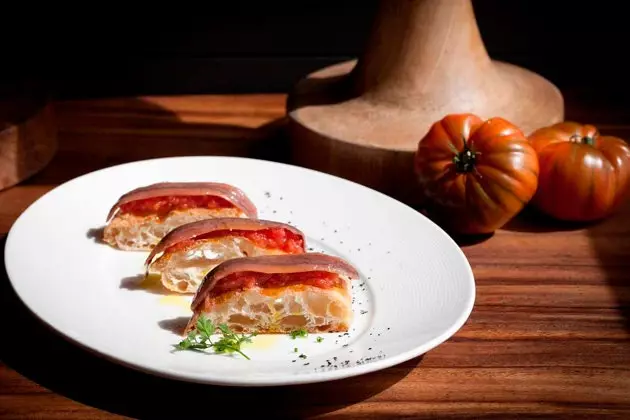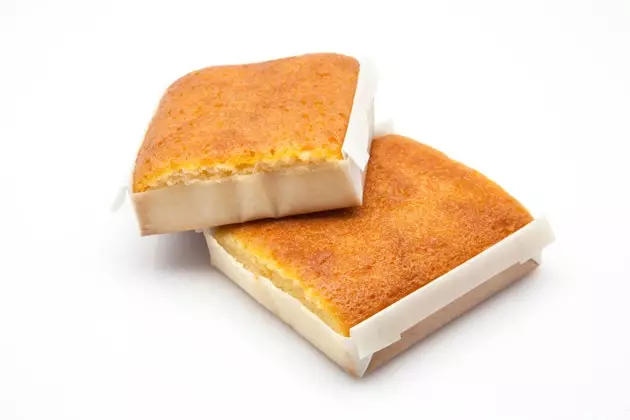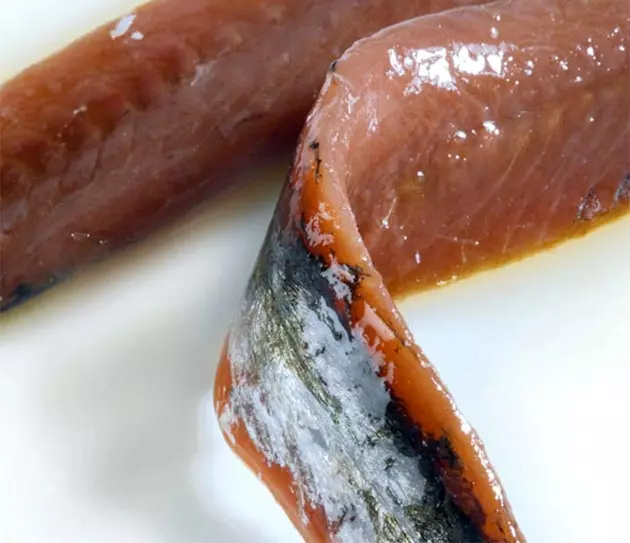
Anchovies, a delicacy from the sea
Some companies stand out in this artisan manufacturing process, such as Don Bocarte, which selects the best anchovies and packaged in both extra virgin olive oil and refined , in a range of products that includes limited series for haute cuisine and cans with low salt content.
Among its preserves we also find Cantabrian bonito (fresh, unfrozen specimens, medium-large in size and just cooked), either in olive oil or grilled with cider vinegar; almadraba bluefin tuna captured in Barbate; king red crab naturally preserved; cooked octopus in its juice; marinated anchovies following an own recipe in cider vinegar and spicy extra virgin olive oil; and the cuttlebone from the haute cuisine series, fished in the Bay of Biscay and prepared in the classic way, with onions in its ink.
If we travel inland, we find another great Cantabrian classic: the sobaos pasiegos , which have a Protected Geographical Indication in the Pas region. This fluffy sweet, when made in an artisan way following its ancestral tradition, gives priority to the flavor of authentic butter, achieving a balanced, soft and juicy result. that's how he does it the slipper , a workshop in La Vega de Pas that selects the best butter derived from the milk of Cantabrian cows to make, together with sugar, eggs and wheat flour, its tasty Pasiego sobaos without using dyes or preservatives in its preparation.

Sobaos Pasiegos
SANTOÑA ANCHOVIES
The anchovy (Engraulis encrasicholus) is a small fish with a compressed body, blackish-blue back and silvery belly, which lives in schools that move at great speed. Due to the amount of fat contained in its meat, it is classified as blue fish and the best time to consume it is from April to July. It is fished using artisanal techniques. Those made in Santoña are the most prestigious of those that are salted due to their strong aroma, pleasant texture and pink flesh.
The traditional curing system in the Cantabrian Sea is the barrel . Once they arrive at the port, they are decapitated and smeared with salt. Closed, and without removing the spine, they are arranged in barrels forming concentric layers of fish of equal size. It is what is known as litters ’, the fewer anchovies there are per litter, the larger they are and therefore the more showy they will be when it comes to plating (which does not mean that there are not smaller ones, equally fine and tasty).

The best: from Santoña
When the barrel is full, it is covered and a weight is placed on top, so that by the pressure they release all the liquid and dehydrate properly thanks to the effect of the salt. After the maturation time (between 6 and 12 months), they are washed to remove salt, their tails are cut, the skin is removed and they are manually 'rubbed' so that they are very clean and boneless before putting the loins in the cans, to which the oil is added.
_* Published in the Condé Nas Traveler Gastronomic Guide 2015, it is now on sale in digital format at Zinio and Apple. _ You can also download the application for Android and on the App Store completely free of charge and start diving into the Spanish gastro map.
*** You may also be interested in...**
- Gastro route in Cantabria: valleys, cheeses and sweets
- Cantabria, plan C: the alternative program to tour the tierruca
- Top 10 towns in Cantabria: overdose of greenery, water and rocks - The definitive foodie application: we launched the 2015 Gastronomic Guide App
- All the articles of Arantxa Neyra
